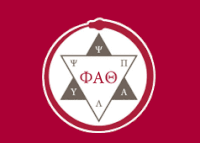Abstract
The Japanese American Internment during World War II drastically altered the lives of over 120,000 people. At the Manzanar Relocation Center just four hours from Los Angeles, 11,000 people were imprisoned from the spring of 1942 to the fall of 1945. Internees maintained self-expression through the gardens of Manzanar using traditional Japanese gardening techniques to transform the barren landscape into one of beauty and communal space. Today, the gardens are being restored based on photographic record, which serve as symbolic representations of the emotion invoked from these spaces. Through photographs, interviews, and evidence gathered on site, a story has been written about the creators of these gardens, their families, and the bond of community they forged in the California desert.
Recommended Citation
Tavoda, McKenzie
(2015)
"A “Land You Could Not Escape yet Almost Didn’t Want to Leave”: Japanese American Identity in Manzanar Internment Camp Gardens,"
Voces Novae: Vol. 7, Article 8.
Available at:
https://digitalcommons.chapman.edu/vocesnovae/vol7/iss1/8


